On my bookshelf: of Cabbages & Kimchi
A Practical Guide to the World of Fermented Food By James Read
It’s been amazing to watch the genre of fermentation literature grow in the last decade, and for those of you who have been along for the ride you know it has not just grown, it has become. Fermented foods were mentioned as parts of other books but now there are enough books that are solely fermentation—from single subject (just vegetables) to tours of many different types of fermentation in one book—that bookstores have a small but mighty fermentation area on their shelves. I have to admit in my home nearly one full (good-sized) bookcase is dedicated to fermentation or fermentation adjacent books. I thought it would be fun to share some of my favorites. A new kid in the stacks is of Cabbages & Kimchi is not just out, but still newish, and an absolute delight to read.
James’s writing is charming and witty, and like all good writing, you easily ride along. Then, without even noticing, you’ve finished a chapter, or the book. James’s approach is fresh and fun giving this book plenty of pop, but the effervesce and sparkle that brings the book to life are the whimsical, “gastro-surrealist,” illustrations by Marija Tiurina. The illustrations are scattered throughout and brought a smile to my face at every encounter.

of Cabbages & Kimchi’s chapters cover ten top ferments: Sauerkraut, Kimchi, Soy Sauce, Vinegar, Hot Sauce, Kefir, Kvass, Tepache and Ginger Beer, Yogurt and Kombucha. There are 58 recipes (with 28 or so variations)! The book is practical (as the title suggests) and introductory (as reviews suggest) but of Cabbages & Kimchi is also bursting with story. Humans are wired for story and James has given the fermented foods he highlights context, stories, and science, that doesn’t feel like your high school science book. Dare I say a real pager turner. He has gone beyond the commonly known facts about kimchi, or sauerkraut, or soy sauce and given the reader a cultural (hi)story bubbling with fun facts.
So…in the spirit of the fun facts and fanciful illustrations I thought we’d have also have a little fun with this post. (Quiz answers at the end of post)
No sailors lost to scurvy
Most of us have read that Captain Cook took sauerkraut as one of the provisions on his first global voyage. Do you know he requested 3 tons for the first voyage and nearly 8 ½ tons of sauerkraut for the second voyage! The problem was the crew was resistant. (Maybe you can relate, is there anyone in your life resistant to eating your sauerkraut?) Simple, he restricted it to the officer’s table, in other words, as soon as the sailors couldn’t have it, they were interested. Soon sauerkraut was served on Tuesdays and Saturdays with salted beef—beef that was so salty they had to tow it behind the ship in seawater to desalinate it.
Kikkoman’s innovative, dripless spout is ‘based on a tea pot’s but inverted’, and combines a double-dispenser to allow the user to slow the free flowing condiment down to a single drop by capping one end with a finger. It has sold over three hundred million bottles in more than 70 countries and was displayed in New York’s Museum of Modern Art in 1915…
What fermentation science took James down the deepest 🐇🕳️?
James answers:
Scientifically, one of the things that took me deepest into the stacks was probably soy sauce, and in particular what gives rise to the nuance in its flavour. There are so many different microbes at work during the long fermentation process, from the expected koji (Aspergillus oryzae) to yeasts (e.g. Zygosaccharomyces rouxii) and lactic acid bacteria (e.g. Tetragenococcus halophilia), and myriad enzymes working to break down the soy (and wheat) into all these different aroma molecules. HEMF is a particular favourite flavor compound I read about, which gives a burnt caramel note, and doesn't typically appear until 2 months into fermentation (and mostly when fermenting soy sauce at lower salt percentages).
Extra points if you can name what HEMF stands for. HEMF is produced by a yeast strain. Here’s a link for its full name and deep info.
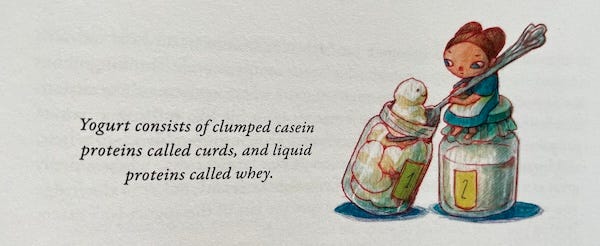
Like a kombucha scoby these little birds, or grains, are a symbiotic community of microbes—"one of the main yeasts lurking in kefir, Kluyveromyces marxianus, is the fastest-growing yeast on the planet, replicating quicher thn any other plant, animal, or yeast, in fact – it’s used to create biofuels from whey, a by-product of cheesemaking.” [Also to produce whey vinegar in Austria.] “Within kefir, however, K. marxianus creates chemicals called esters, which are responsible for giving the drink a slight fruity aroma.”
So many microbial friends making kimchi tasty
Korean researchers have enumerated the microflora of a clove of garlic and found that it contained fifty species of lactic acid bacteria, forty more non-lactic acid bacteria, as well as fifteen yeasts….Of these, various strains of Leuconostoc mesenteroides occur most frequently…
Fill in the blank
How many ways are there to say kombucha in German?
In English?
In all?
You might be asking why so many in Germany? James gives us that answer: “In became popular in Germany after the First World War, when returning soldiers and prisoners of war brought it back from Russia. Keep reading.
What ferment had the hardest history to track down?
James said:
The hardest thing to track down in terms of history was, surprisingly (as I would have thought it would be simple for such a popular ferment), the origin of kombucha! There's lots of legends and hearsay about where it's from, but in truth it's not easy to find records of it before the 19th century, and even then they're scant. There's also more names for kombucha than any other ferment - I counted over 160! Of these, 49 are German and 42 English - indicating where it's popular - and lots of these include geographic indicators, like Volgameduse ('Volga jellyfish') and Japanischer Pilz (‘Japanese mushroom’). Of course, they all point at different places, but mentions of Japan or Russia are the most common. Further to this, I found a report from a Russian government official in 1835 who mentions a cold tea that has a "slippery cake, like a mushroom that grows on rotten stumps" and tastes "similar to kvass". It was one of those occasions where I was searching archives in quite a few languages!
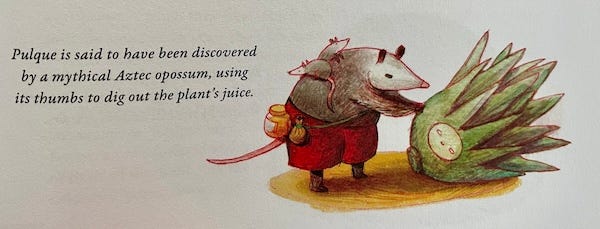
Don’t forget answers to fermentation trivia at the end of the post. For those of you building your fermentation library here are links to other books I enjoy (and wrote about).
Fermenter: A New Cookbook 🚀 Today
A few months ago I had the pleasure of reading an advanced copy of Fermenter: DIY Fermentation for Vegan Fare. I had fun reading it and left inspired to try multiple recipes. It was like hanging out, nibbling on ferments, and chatting with Aaron + Liz. The book’s vibe is chill, honest, rich with story and has an easy conversational tone. Where Fermenter…
Preserved: Fruit and Preserved: Condiments
This morning the sunrise is veiled by low clouds or high fog, depending on how you look it. It doesn’t pull at me to run and frolic in the falling leaves (yes I still build large leaf piles solely for the purpose of jumping in and I bring my grandchildren so I don’t look like a crazy old lady) but it does make this golden litter stand out. The yellow st…
Answers
True, Christmas tinsel has been referred to as silver-plated sauerkraut versilbertes Sauerkraut.
Kikkoman bottle took three years and over 100 prototypes.
True-ish, Irina Sakharova, an awad-winning butter maker, was sent by the company she worked for to try to get a Karachy prince to share some kefir grains. He refused. On a subsequent visit it is alleged that she was kidnapped to be his bride—when brought to court he was order to give the grains as recompense. (His grandson denies these events claiming the grains were given freely.) Irina studied the grains in her lab and used her first kefir to supply hospital patients.
Kefir is called yogurt de pajaritos, or ‘yogurt of the little birds’ in Chile.
How did you do?





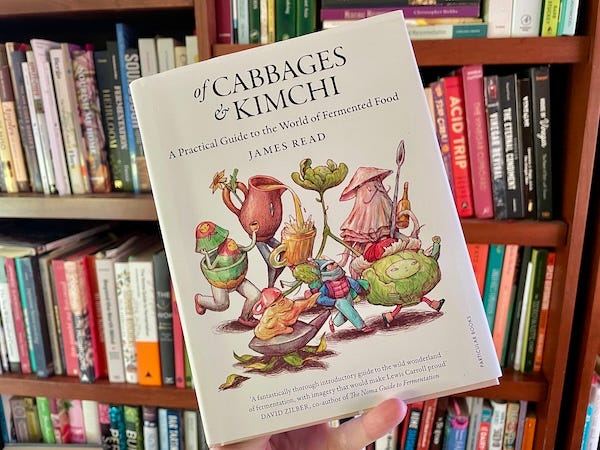
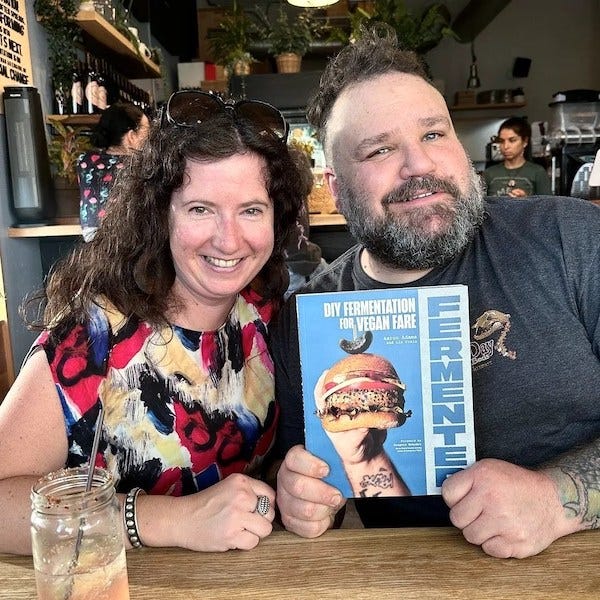
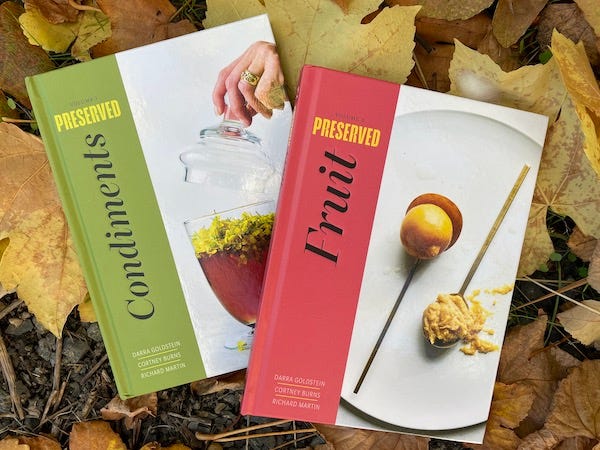
Such a great book, and James is a really interesting chap who was recently interviewed on The Delicious Legacy podcast with Thom (who has a brilliant accent) https://podcasts.apple.com/gb/podcast/of-cabbages-and-kimchi-a-history-of/id1494707127?i=1000674141513
Love your list Kirsten and just purchased Of Cabbages and Kimchi. I can hardly wait to dive in. Thank you!